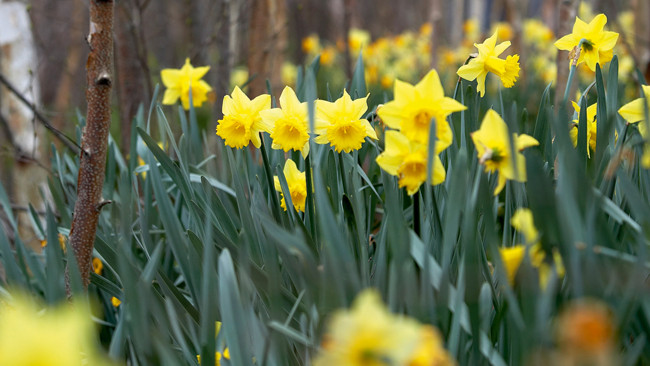- Attract more buyers
- Increase the competition
- Drive the sale price
- Get a better result on auction day!
If there’s one thing that every homeowner, investor and real estate professional dream of, it’s watching their property value soar. And while market influences can play a part in a sale or rental price, there are plenty of factors within your control to keep that figure scaling in the right direction.
 One of the fastest shortcuts to drive your property value up in a short space of time is not in renovations, decorating or interior design – it’s in landscaping!
One of the fastest shortcuts to drive your property value up in a short space of time is not in renovations, decorating or interior design – it’s in landscaping!
When it comes to selling a property, a front garden is the first and last experience that a buyer will have. This makes it a goldmine for increasing value and ensuring your property stands out from the rest on inspection or auction day.
But showing off a property in its entirety creating dream for a wide pool of buyers is all about the finer details, and knowing what to focus on and where to make small investment for big returns is a fine line.
Jared Volfsbergs and his landscaping team have been helping property owners achieve better returns on their investment with garden makeovers for over 12 years. During that time, he’s learned a few secrets that make a big difference on auction day.
Read on to discover his insider tips and tricks to start boosting your own property value overnight, and how to put more dollars back in your pocket on sale day.
First impressions count
Create an impact! It’s the most important thing to get right when selling, yet so many vendors miss the opportunity to capture buyers in those first critical moments. Before buyers take the time to look inside a property they have to be impressed by what they see on the outside.
The front garden is a sales tool. Used effectively, it can bring great rewards. Sell a home faster and for a higher price by simply enhance a property’s curb appeal.
- Remove weeds & mow lawns – Present a neat and tidy aesthetic
- Make an entrance – Greet and guide your buyers by paving a pathway to your front door. Even on a small frontage, it will give the entrance a distinguished feel and create a warm welcome, leading them into the property.
- Define lawn edges and garden bed borders – creates a sense or order and frames the space
- Mulch beds – Adding mulch adds a beautiful contrast against the plants and hardscape features, and the richness of its texture creates a clean, smooth surface and a fresh block of colour.
- Pressure spray – Revive pavers, decking and any outdoor furniture to give them a sparkling finish.
- Add plant pots – These are an easy way to add colour to your garden. Place 1-2 pots beside the front door featuring clipped topiary, or a dense, thickly textured plant like mother in law tongue to give the entrance a defined, neat configuration.
Give the backyard some attention too!
The buyer has been impressed by the front, relieved the interior is just as beautiful, now they want to nosy around the back.
When you’re walking around a new garden and inspecting a property, two features always stand out: space and organisation. Focusing on these can reap many rewards later.
- Maximise space – Give the illusion of space in a courtyard by using large pavers and;
- Prune and hedge – Cut down and neaten overgrown plants and trees and hedges to create a feeling of spaciousness, but think conservatively. The aim is to make the property look well-maintained and cared for, be careful not to over prune which can often reveal the brown, woody undersides of fresh foliage.
- Lay turf – A lush lawn will make any home sparkle, turf adds softness and feeling of grandeur.
- Add flowers – Fill garden areas with bright flowering annuals or perennials to give your garden an immediate lift. Flowers and plants will add colour and texture but minimise the number of plant species in your garden. This will make it appear easier to maintain and give it a more uniform look. Select popular species and colours so as not to polarise buyers and that work well together. This may seem obvious, but make sure all new plants and flowers match the house, fence and existing plants.
- Imply “the dream” – People love entertaining and outdoor spaces can be somewhat of a luxury. Think of adding some decking and or creating a space for buyers to envisage themselves sitting in. Stage a table with a bottle of white on ice, a couple of empty glasses and maybe even a cheeseboard!
Less is definitely more when creating your design. The main thing is to make it look neat and easy to care for. And for a final little secret tip? Just before open for inspections, hose down decks and garden beds for a glistening effect.
Selling property?
SPRUCE LANDSCAPING understands your need for an easy solution that fits within a budget, impresses your clients, maximises the competition and has a fast turnaround to fit in with your sales schedule.
Spruce Landscaping will get a garden sale-ready quickly to avoid delaying the sale process, deliver high quality work and provide solutions to fit a range of budgets and property types.
Our focus is on quality and professionalism right from the first contact. Good liaison, attention to detail, high standards and respect for the property are all hallmarks of our work.
Call the team at Spruce landscaping
For more landscaping tips and tricks for boosting property value, or to book in for one of our professional garden makeovers, contact us today! Or call 1300 556 532.
**‘Landscape plant material, size and design sophistication increase perceived home value.’ Department of Horticulture, Michigan State University, East Lansing.
Image by Brian Babb via Unsplash














